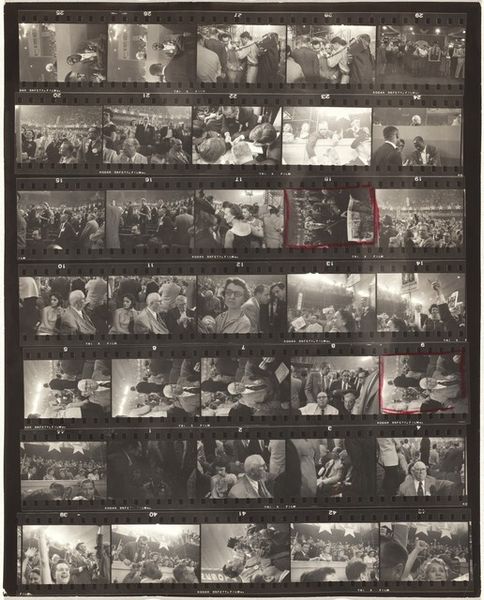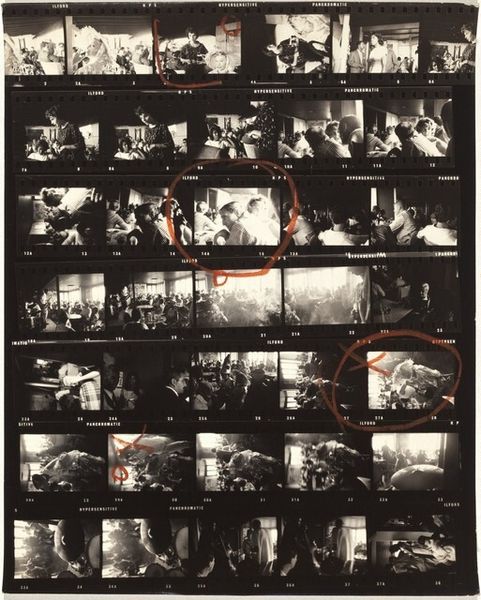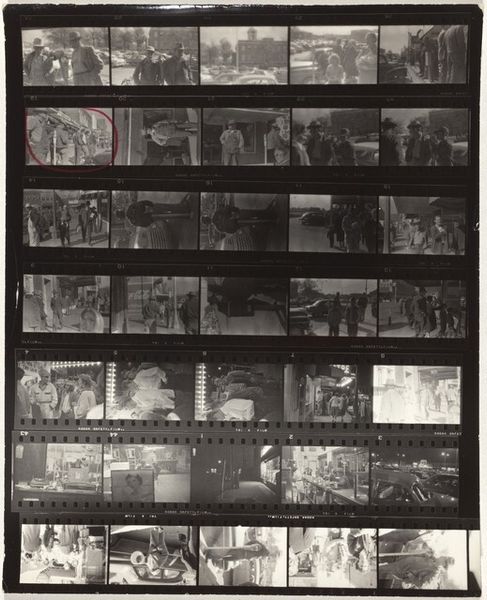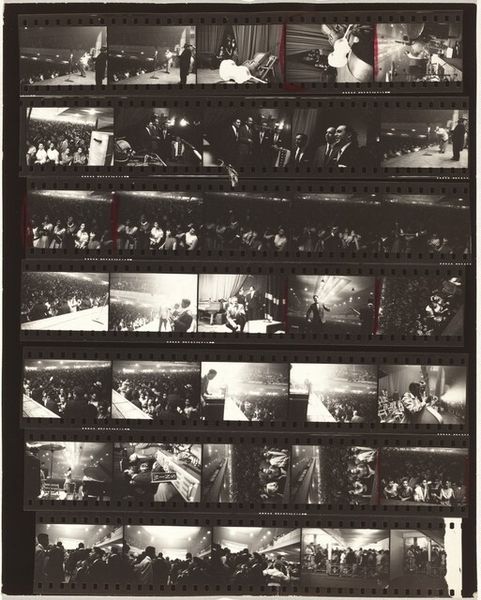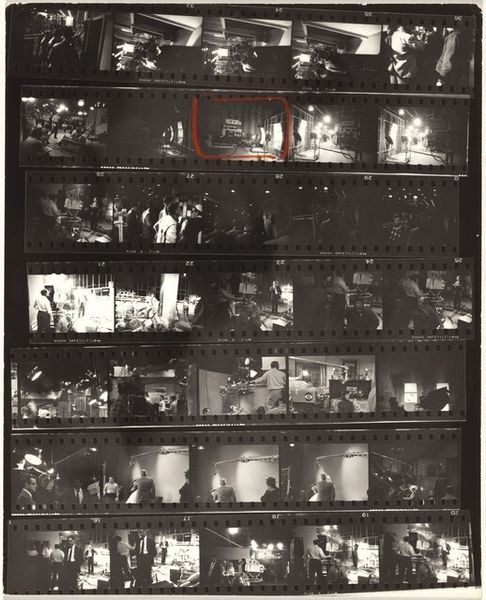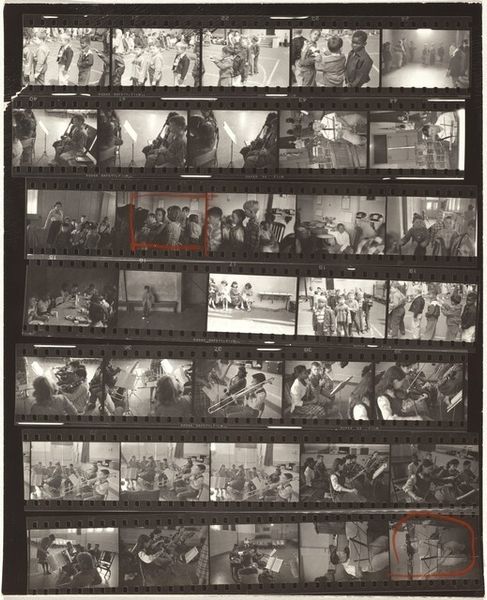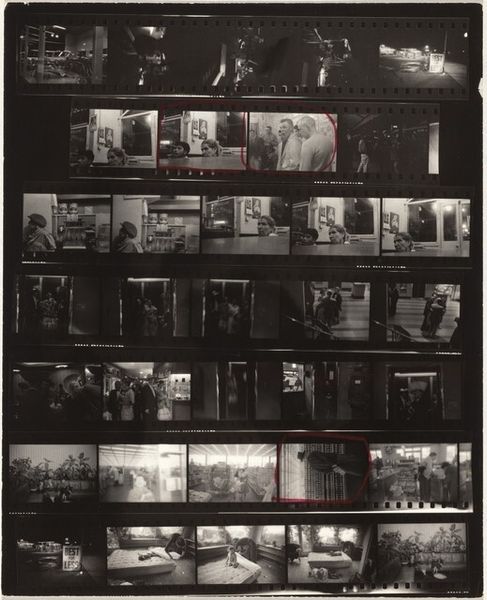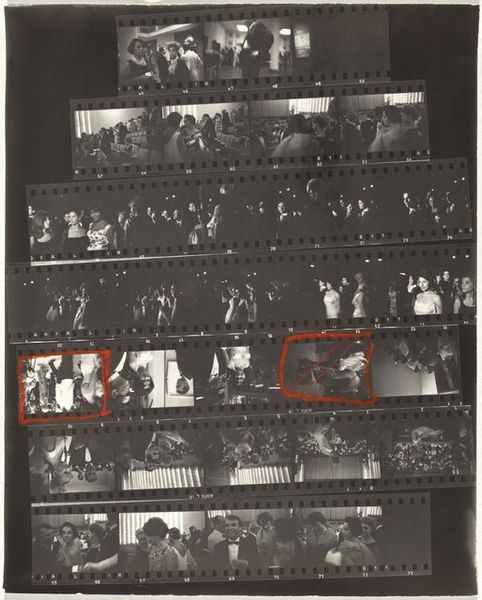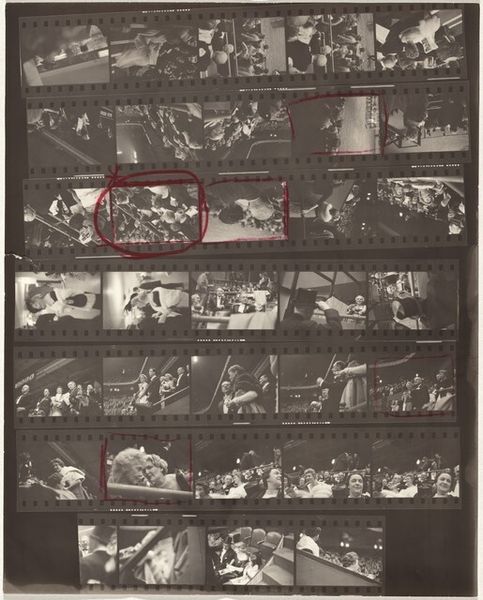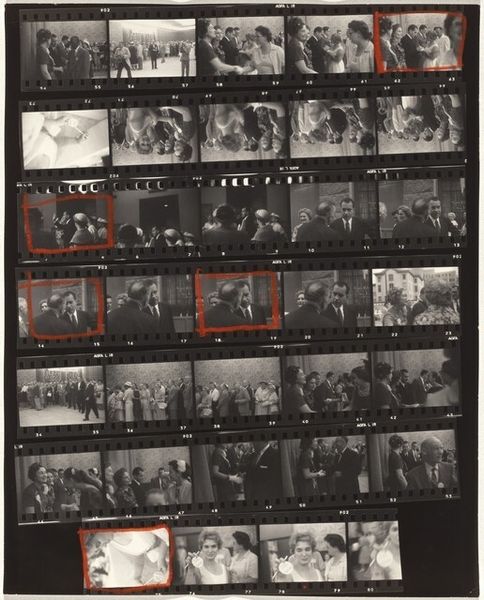
performance, photography, happening
#
action-painting
#
abstract-expressionism
#
film photography
#
performance
#
photography
#
happening
#
film
Dimensions: overall: 25.2 x 20.2 cm (9 15/16 x 7 15/16 in.)
Copyright: National Gallery of Art: CC0 1.0
Curator: Well, hello there. Let's talk about this compelling photo-strip here by Robert Frank, documenting Claes Oldenburg's "Happening 4," dating back to around the 1950s. Gosh, what's striking is just the fragmented glimpses – almost dreamlike, y'know? Editor: Dreamlike, yes, and also incredibly evocative of a specific cultural moment. Looking at these frames, I immediately think of the rise of performance art as a radical form of expression, a direct challenge to established art world norms, and perhaps the audience, as willing or unwilling witnesses? Curator: Oh, absolutely! Look how Frank captures the blurry energy. It’s a cascade of blurry faces interspersed with… what is that, figures on scaffolds? Makes me feel like I'm scrambling to catch a fleeting moment. A memory? Or an anxiety? Editor: And it’s crucial to recognize the sociopolitical climate of the time. The 1950s were an era defined by Cold War tensions, social conformity, yet simultaneously brimming with nascent counter-cultural movements. Happenings like these, breaking free from traditional theatrical structures, became spaces for artists and audiences alike to question established orders. Curator: Right, there's this tension between order and chaos just in the frame itself; it is a photo strip, meaning each snapshot should be telling part of a specific sequential moment. I sense some anti-establishment feelings too— a refusal of the expected artistic narrative, embracing chance. This feels almost punk. A performance reduced to flickering impressions. Editor: Exactly. Think about the demographics too – who were the individuals participating in these happenings? What did it mean for them to gather in these spaces and witness these experimental performances during an age where such expressions weren't widely accepted? Curator: It almost seems to presage the ways we now consume content - the constant barrage of social media, these fragmented images... Do you feel that connection too? Or is my artistic license running wild here? Editor: Not at all. This idea about constant content consumption makes me reflect on art institutions and archives. What happens when a "happening" is permanently recorded and then institutionalized. Does it retain its original vitality or get turned into a token? Curator: Oh, that's an endless question. Something intimate shifts. Like a butterfly pinned in place. A bit morbid, no? But… it is a beautiful record, I still think. Editor: Indeed, a reminder to remain critically engaged with the art we experience but also recognize its position in social history.
Comments
No comments
Be the first to comment and join the conversation on the ultimate creative platform.
